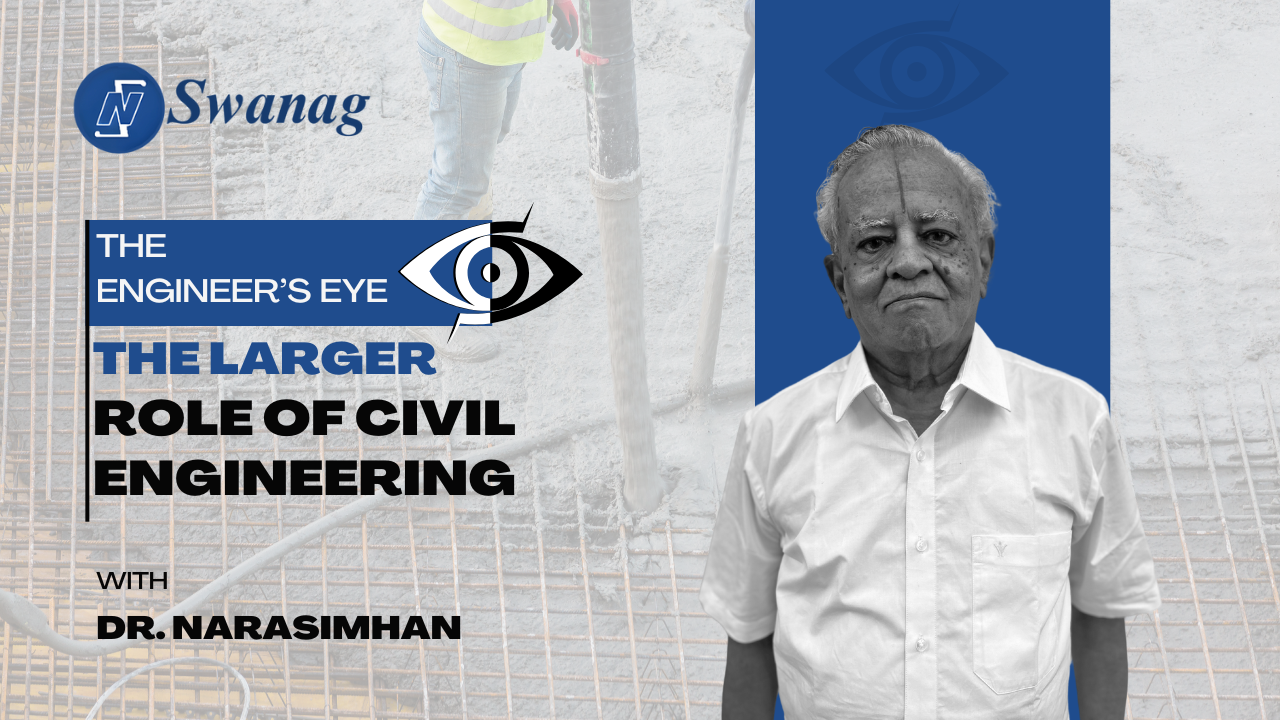- Written by: admin
- June 10, 2025
- Categories: Construction
- Tags: , Building, Construction, Sustainability
The Larger Role of Civil Engineering in Society
Civil engineering isn’t just about designing buildings or bridges. It plays a much broader role — shaping the public infrastructure that communities rely on every day. In this powerful message from The Engineer’s Eye, Dr. Narasimhan explains the larger role of civil engineering in creating sustainable, long-lasting infrastructure across both urban and rural areas.
Beyond Cities: Reaching Villages and Rural Communities
In metros and big cities, civil engineers and structural specialists are available in plenty. But in rural India — where the majority of our population still lives — their presence is limited. This is where the larger role of civil engineering becomes crucial.
Civil engineers must extend their expertise to:
- School buildings
- Hospitals
- Water tanks
- Roads and drainage systems
These are essential for improving the quality of life in remote areas and ensuring basic infrastructure is strong, safe, and sustainable.
Building Infrastructure That Lasts
According to Dr. Narasimhan, the duty of every civil engineer is to create infrastructure with a lifespan of at least 50 to 60 years. And it’s not just about construction — it’s also about ensuring proper maintenance.
Engineers must:
- Monitor construction quality
- Guide the local authorities on maintenance
- Help reduce unnecessary rebuilding
- Ensure public funds are used efficiently
This long-term approach highlights the larger role of civil engineering — not just building, but preserving public assets.
Responsibility Towards Taxpayer Money
Public infrastructure is built with taxpayer money. Whether it’s a school, a hospital, or a community water tank, these structures require huge investments and cannot be rebuilt frequently.
Dr. Narasimhan emphasizes that civil engineers must be mindful of:
- Sustainability
- Cost efficiency
- Proper planning and monitoring
By doing so, they ensure that limited resources are used wisely — another reason the larger role of civil engineering must be recognized and respected.
Key Takeaways from Dr. Narasimhan
- The larger role of civil engineering goes beyond urban areas — rural India also needs expert intervention.
- Infrastructure should be designed to last 50–60 years with proper maintenance.
- Engineers must assist authorities not only during construction but after completion too.
- Efficient use of public funds is a major civil engineering responsibility.
Frequently Asked Questions (FAQs)
1. What is the larger role of civil engineering in today’s world?
It involves building, maintaining, and sustaining infrastructure that benefits society, especially in underserved rural areas.
2. Why is maintenance guidance important from civil engineers?
Without proper maintenance, even the best-built structures fail early. Engineers help ensure long-term usability and safety.
3. Can civil engineers influence rural development?
Absolutely. By designing and supervising essential structures in villages, they directly improve quality of life and local development.
4. How long should public infrastructure last?
Ideally, with good materials and maintenance, 50–60 years or more — as per Dr. Narasimhan’s recommendation.

